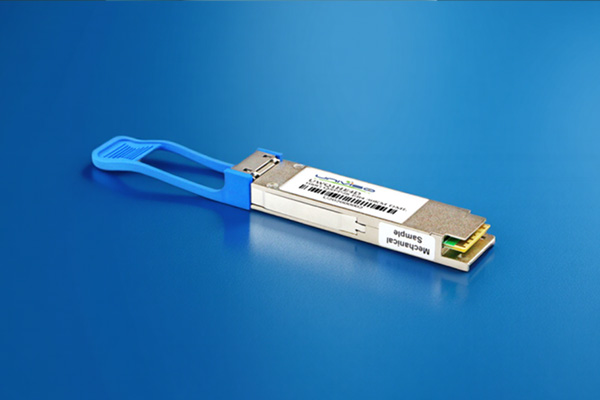As modern data centers and metro networks evolve, the demand for faster, more reliable, and longer-reach optical links continues to grow. Among the various 100G Ethernet solutions available today, the 100GBase-LR QSFP28 Single Lambda 10km optical module stands out as an efficient and cost-effective choice for extending high-bandwidth connectivity over long distances.

The 100GBase-LR (Long Reach) QSFP28 Single Lambda module is an optical transceiver designed to transmit 100 Gigabit Ethernet signals over a single wavelength. Unlike earlier 100G solutions that relied on four separate wavelengths (typically CWDM4 or PSM4 designs), this single-lambda approach simplifies the architecture by compressing the 100G data stream into one optical channel using advanced modulation techniques such as PAM4.
This design enables the module to reduce component complexity, lower costs, and maintain interoperability across various vendors. Packaged in the compact QSFP28 form factor, it provides an easy upgrade path for existing 100G infrastructure while keeping power consumption and density requirements in check.
One of the defining advantages of the 100GBase-LR Single Lambda module is its 10 km reach over standard single-mode fiber (SMF). This makes it an excellent choice for inter-data center links, large enterprise campuses, and metro aggregation networks where extended connectivity is essential.
Typical features include:
Data Rate: 100Gbps using PAM4 modulation
Reach: Up to 10km on single-mode fiber
Connector Type: Duplex LC interface for simplified deployment
Low Power Consumption: Optimized design for energy efficiency in dense rack environments
Interoperability: Compliant with IEEE 802.3 standards, ensuring compatibility across equipment vendors
By combining long reach with high density, the module addresses both current and future scaling requirements of cloud providers, telecom operators, and enterprise IT networks.
The 100GBase-LR QSFP28 Single Lambda is widely deployed in several scenarios:
Data Center Interconnect (DCI): Supporting high-speed links between data center facilities up to 10 km apart.
Enterprise Networks: Offering reliable connectivity for large campus backbones where 100G traffic demands are rising.
Metro Networks: Enabling cost-effective aggregation of traffic for service providers and carriers in metropolitan areas.
Cloud Infrastructure: Helping hyperscale data centers expand bandwidth without increasing complexity or operational costs.
The shift from multi-wavelength 100G solutions to single-lambda technology marks an important step in optical networking. With fewer optical components, the manufacturing process is simplified, which translates into lower cost per bit for end users. Additionally, the reduction in complexity improves module reliability and scalability, making it easier for operators to plan long-term infrastructure growth.
From an operational perspective, the module’s compatibility with existing QSFP28 ports ensures smooth migration to higher-speed networks without the need for major hardware overhauls. The balance of reach, efficiency, and performance makes it a future-proof solution for organizations looking to expand 100G deployments.
As the industry continues its march toward 400G and beyond, the adoption of 100G Single Lambda technology sets the stage for broader standardization. In fact, the same principles applied in 100G Single Lambda are already influencing the development of 400G DR4 and FR4 solutions, which rely on similar PAM4 modulation schemes. For enterprises and service providers, investing in 100GBase-LR QSFP28 Single Lambda modules today provides not only immediate performance benefits but also alignment with the evolutionary path of optical networking.
The 100GBase-LR QSFP28 Single Lambda 10km transceiver delivers an ideal mix of speed, reach, and efficiency for modern high-performance networks. Its ability to extend 100G Ethernet over 10 km using a single wavelength makes it a versatile solution for data centers, enterprises, and metro networks alike. By simplifying design, reducing costs, and ensuring scalability, this technology has become a cornerstone in the transition to next-generation optical infrastructure.
Headquarter address :Room 1603, Coolpad Building B, North District of Science and Technology Park, Nanshan District, Shenzhen,China.518057